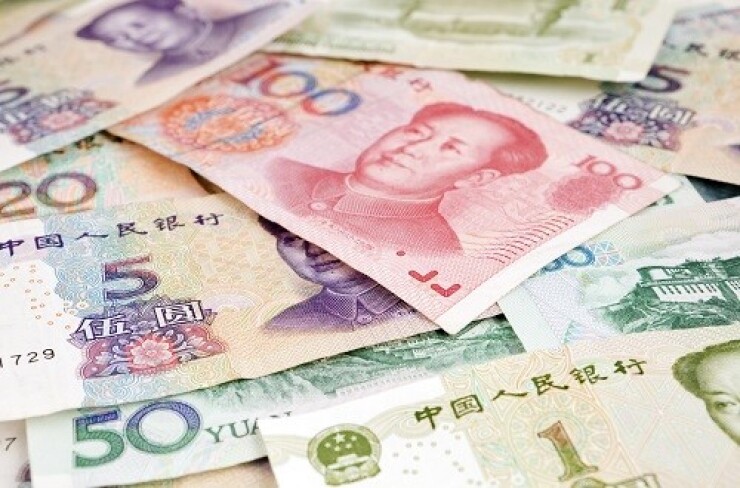The trade war escalated on Monday as China let its currency depreciate against the U.S. dollar to the lowest level in over a decade.
U.S. stocks dropped like a stone in response, with the Dow Jones Industrial Average falling by as much as 950 points around 3 p.m. Treasury yields plunged in a flight-to-safety bid, with the 10-year yielding about 1.73% and the 30-year yielding around 2.29% at 3 p.m., ET.

And a widely watched Treasury-market recession indicator moved to its highest warning level since 2007 as yields on the 10-year Treasury notes fell, almost completely erasing the surge that followed President Donald Trump’s 2016 election.
At one stage, the 10-year yield was 32 basis points lower than the yield on the three-month bills, according to Bloomberg News, the most extreme yield curve inversion since the lead-up to the 2008 crisis, although that gap narrowed by as the three-month yielded 2.01% at 3 pm., ET.
“The devaluation was designed to support the Chinese export sector by making their exports more competitive on global markets and help offset punitive U.S. tariffs,” said Scott Anderson, chief economist at Bank of the West. “This comes after the Trump Administration last week announced a 10% tariff on an additional $300 billion of Chinese exports to the U.S. … Due to the latest escalation in the U.S.-China trade war and the potential for further economic damage, we now expect another quarter-point Fed interest rate cut in September.”
There were also reports that China was canceling agricultural orders from the U.S., which only added to the markets' unease.
Morgan Stanley also weighed in, saying the firm doesn’t expect any quick resolution of the disagreements.
“In our view, negotiating positions and the macro background reveal that each side perceived that the benefits of standing one’s ground outweigh the benefits of cooperation,” Morgan Stanley said in a Monday research note.

Morgan Stanley cited the hardened negotiating stances of both the U.S. and China; the U.S. Administration's tendency to follow through on its tariff guidance, absent major concessions from trading partners; and the potential incentives for the U.S. to escalate quickly.
Morgan Stanley said investors should act as if further escalation will happen in 2019.
ISM services sector declines in July
The Institute for Supply Management’s Non-Manufacturing Index fell to 53.7 in July from 55.1 in June, according to the ISM’s report on business released Monday.
“This represents continued growth in the non-manufacturing sector, at a slower rate,” said by Anthony Nieves chair of the ISM. “This is the index’s lowest reading since August 2016 when it registered 51.8%. The non-manufacturing business activity index decreased to 53.1%, 5.1 percentage points lower than the June reading of 58.2%, reflecting growth for the 120th consecutive month.
The new orders index fell to 54.1% from 55.8% in June; the employment index rose to 56.2% in July from 55%. The prices index dropped to 56.5% from 58.9%, indicating that prices increased in July for the 26th straight month.
According to the NMI, 13 non-manufacturing industries reported growth.
“The non-manufacturing sector’s rate of growth continued to cool off,” said Nieves. “Respondents indicated ongoing concerns related to tariffs and employment resources. Comments remained mixed about business conditions and the overall economy.”





